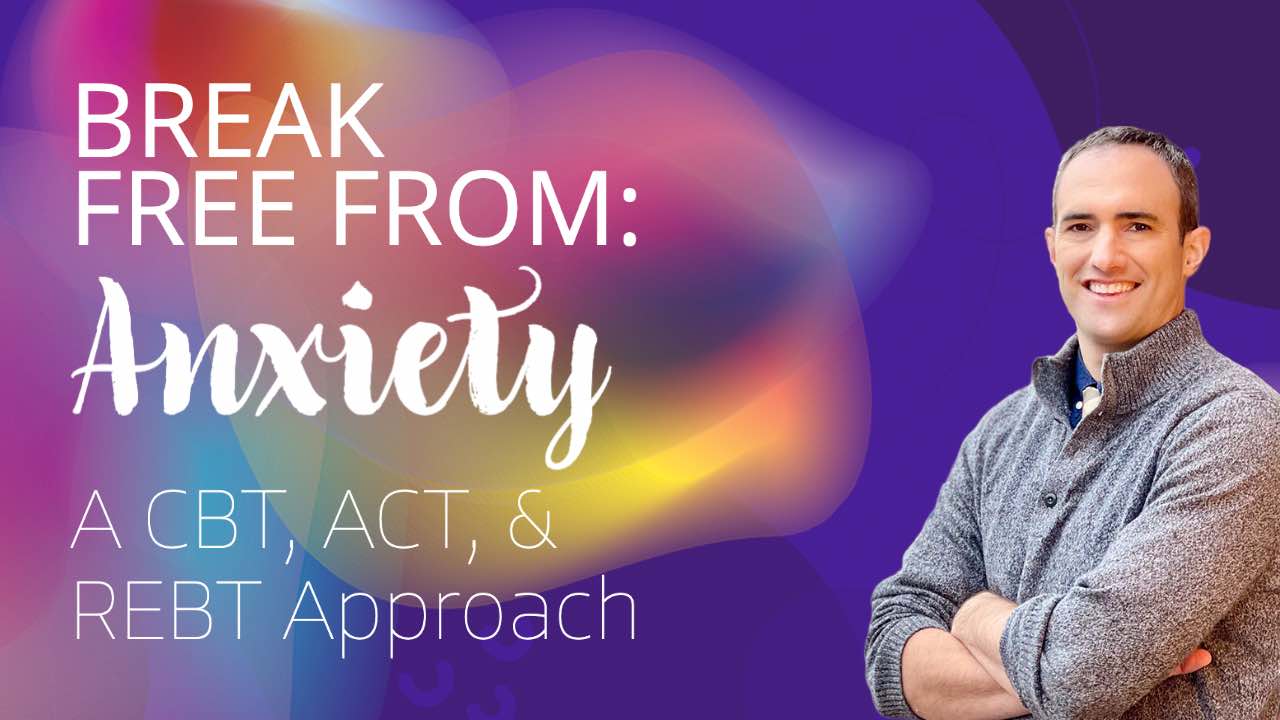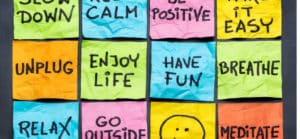
About Course
In this online course, I have distilled the most effective principles and techniques from Cognitive Behavioral Therapy (CBT), Acceptance and Commitment Therapy (ACT), and Rational Emotive Behavioral Therapy (REBT) to provide practical training and resources for managing anxiety. With a focus on addressing the root causes of anxiety, this course offers a wealth of knowledge on overcoming symptoms, developing emotional intelligence, and promoting personal development.
By enrolling in this anxiety course, you will gain lifetime access to valuable materials and techniques designed to help you understand, manage, and overcome anxiety. Learn at your own pace, and benefit from the expertise of a clinical psychologist committed to helping you live an anxiety-free life.

Treat Anxiety with Holistic Options
If you’re not satisfied with the course, please email me within 3 days, and I will provide you with a full refund. My name is Dr. Bruce Bassi, a board-certified psychiatrist, and I have treated numerous individuals struggling with anxiety disorders, panic attacks, and stress. Drawing from my experience and expertise, I created this comprehensive anxiety course to help others overcome anxiety symptoms and improve their mental health.
Anxiety Course to Help with Stress Management and Social Anxiety

Anxiety Relief with a Course
Stress management techniques involve a variety of approaches aimed at reducing the negative effects of stress on physical and mental well-being. Some effective techniques include:
- – mindfulness meditation
- – deep breathing exercises
- – regular physical activity
- – adequate sleep
- – social support
- – time management
- – and problem-solving skills.

Breathing Techniques for Anxiety
Mindfulness meditation involves focusing on the present moment and accepting thoughts and feelings without judgment, while deep breathing exercises help regulate the body’s response to stress. Regular physical activity releases endorphins, which can improve mood, and adequate sleep allows the body to recover from the effects of stress. Social support from friends and family can provide emotional comfort and a sense of belonging, while time management and problem-solving skills help individuals better manage stressors and achieve goals.

Social Anxiety Self Help
With social anxiety, the fear may be:
- – sounding awkward
- – not being accepted
- – not being able to escape.
On an exam, or when performing, there might be a fear of failure or being seen as less than. It’s important to note that you might not always agree with that fear, but part of you does. That fear is buried in there. For example, maybe you have walked over a bridge a hundred times before, but suddenly start to get very anxious. OR, you might be flying, and just knowing statistically that you are in the safest means of transportation is no solace against anxiety. It will be hard to just tell yourself everything’s just fine! Your anxious brain is not always logical, it’s going to find the biggest threat and respond to it.
Self Help Course for Anxiety

Self Help Course for Anxiety and Depression
We accept that there is no easy and fast way of reaching an point of peak physical fitness — you adapt good habits as a healthy lifestyle.
But before we understood the benefits to exercise, one might think it doesn’t make sense to be injuring your muscles, and endure great amounts of time and discomfort and energy in working out. However the science on the benefits of physical activity is clear, so we accept it and much of society pursues some form of physical activity.

Overcome Symptoms of Anxiety
Similarly, with anxiety it takes work to address the irrational beliefs associated with anxiety. To apply REBT principles to self-help for anxiety, individuals should identify and challenge their irrational beliefs about the perceived threat, catastrophic outcome, or their own ability to cope with anxiety. They should also develop rational, evidence-based beliefs to replace the irrational ones, and engage in behavioral strategies such as exposure therapy, relaxation techniques, and problem-solving to manage anxiety symptoms.
Anxiety Training
Anxiety can be very challenging to deal with, but there are effective strategies that can help you manage and reduce its impact. Anxiety training typically involves learning relaxation techniques such as deep breathing exercises and progressive muscle relaxation to calm the body and mind. It also focuses on identifying and challenging negative thought patterns that contribute to anxiety, helping you develop more balanced and realistic thinking. Building healthy coping mechanisms and self-care practices are essential components of anxiety training, allowing you to cultivate resilience and emotional well-being. Remember, with patience and practice, you can acquire the skills and tools necessary to navigate anxiety and regain control over your life.
Panic Attacks
Panic attacks are treatable and many people experience significant improvement with appropriate treatment, including therapy and medication. There are a variety of effective treatments available for panic attacks, such as cognitive-behavioral therapy (CBT), exposure therapy, and medication. Research in the field of mental health continues to advance, leading to new and promising treatments for panic attacks and other anxiety disorders.
What are symptoms of panic attacks?
Panic attacks can be overwhelming and frightening, often accompanied by a rapid heartbeat and a sense of impending doom. You might also feel a shortness of breath, making it difficult to catch your breath. Additionally, physical sensations like chest pain, dizziness, and trembling are commonly associated with panic attacks. It’s not uncommon to experience a tingling sensation or numbness in your extremities as well. Remember, you’re not alone in this, and seeking support from a healthcare professional can help you manage and overcome these distressing symptoms.
Why do panic attacks happen at night?
Panic attacks can occur at night due to heightened physiological arousal and decreased distractions, allowing anxious thoughts and sensations to become more prominent in one’s awareness. Additionally, hormonal fluctuations during sleep can trigger panic attacks in individuals with an anxiety disorder. Furthermore, the absence of daytime responsibilities and activities may leave individuals more vulnerable to rumination and excessive worry, contributing to nocturnal panic attacks.
Anxiety and Depression Course

Stress Management Help for Anxiety
Acceptance and Commitment Therapy (ACT) and Rational Emotive Behavior Therapy (REBT) can be helpful in managing negative intrusive thoughts related to anxiety and depression in several ways.
ACT emphasizes the importance of accepting negative thoughts and emotions rather than trying to suppress or eliminate them, allowing individuals to develop greater psychological flexibility and resilience. REBT, on the other hand, helps individuals to identify and challenge irrational beliefs and thought patterns that contribute to negative emotions and behaviors.
By combining these two approaches, individuals can learn to recognize and accept their negative thoughts without getting caught up in them, while also challenging and replacing unhelpful beliefs and thought patterns. This can lead to a greater sense of control and empowerment over one’s thoughts and emotions, ultimately reducing the impact of negative intrusive thoughts on anxiety and depression symptoms.
Course Content
Introduction
-
02:53
-
Importance of self-expression
07:42 -
Making change
03:59 -
New perspectives on old problems
03:51 -
About me
04:38

